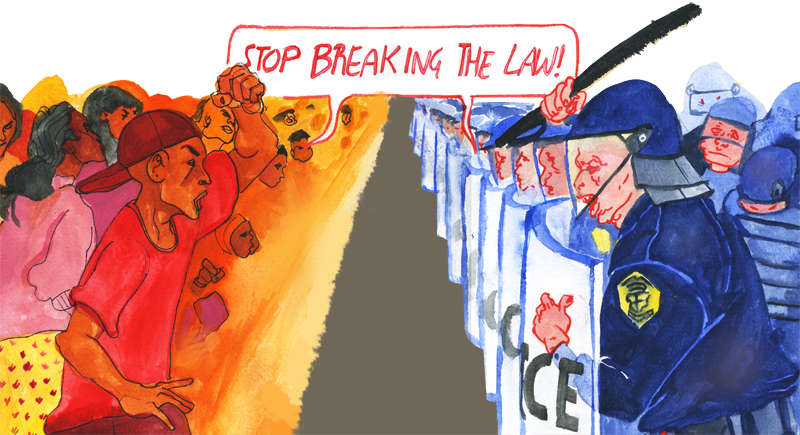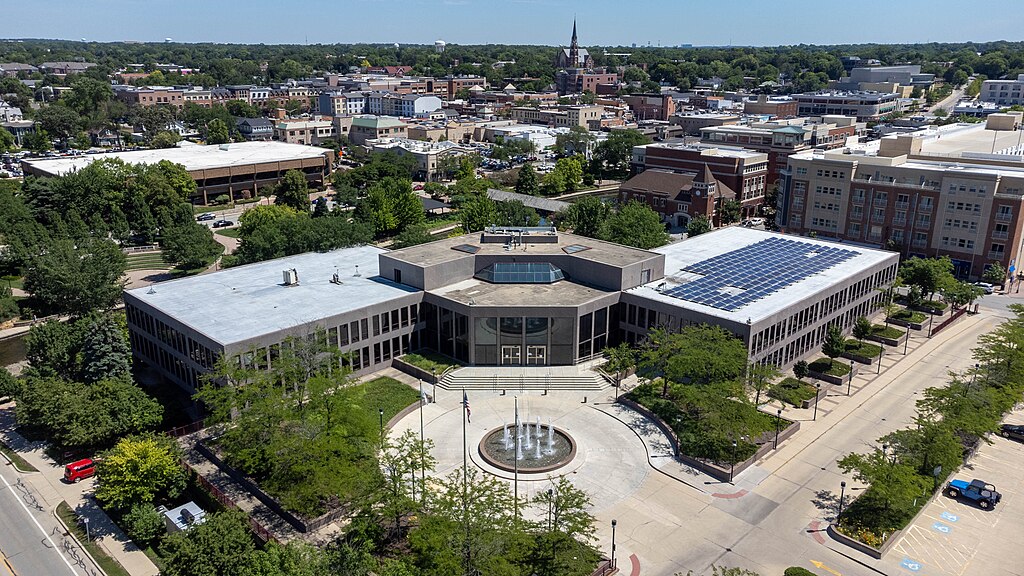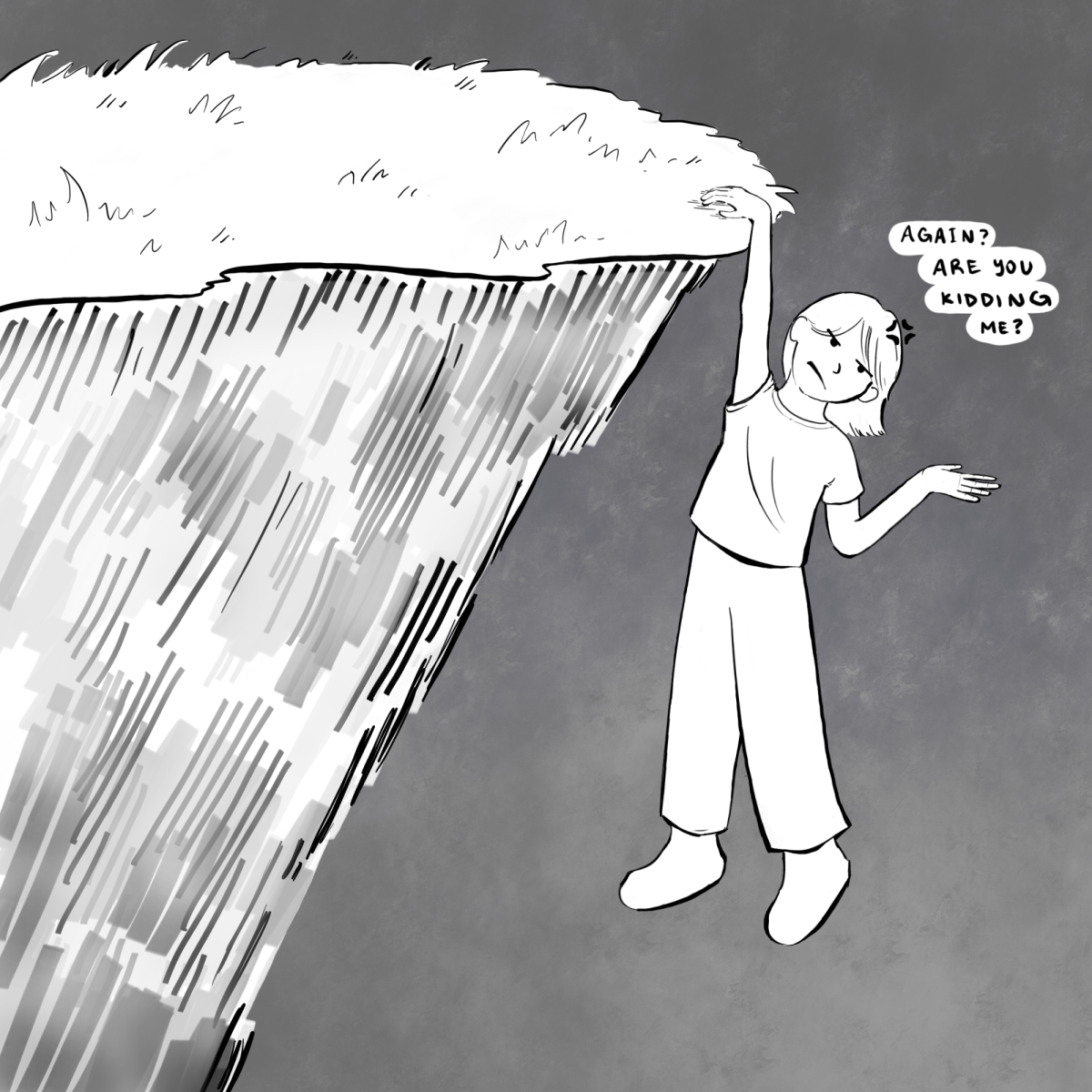The Naperville Central community responds to recent racial unrest
May 27, 2015
“No secret my friend, you can get killed just for living in your American skin.”
In his controversial song “American Skins (41 Shots),” Bruce Springsteen illustrates the foul play by the police in the killing of Amadou Diallo in 1999. Diallo was an immigrant from Guinea and was catastrophically mistaken by police for a serial rapist.
For centuries, America has dealt with the discrimination of African-Americans, starting with the Civil War continuing to the Civil Rights movement, present-day race riots against police brutality still occur in various cities across the nation, proving that this issue has not yet been resolved. Biracial senior Corrine Conway believes that there is still a long way to go before the problem is solved.
“Race relations is definitely still a problem,” Conway said. “We can’t say racism is dead because I don’t think it will ever be, but we can do more to [solve] it now than I think we could ever before.”
The Civil Rights Act of 1964 was intended to end injustice towards members of the black community. Flash forward to 1991, when the streets of Los Angeles were filled with African-American rioters in one of the most significant uproars against police brutality. The riot erupted after police officers excessively beat Rodney King, a young black man who was caught speeding.
Twenty-four years after the L.A. riots, the nation experienced a sort of déjà vu thanks to events in Ferguson, Mo. Crowds took to the streets in anger after 18-year-old Michael Brown was fatally shot by police officer Darren Wilson.

Yet another recent example of unrest occurred in Baltimore after the death of Freddie Gray. According to The Baltimore Sun, Gray was illegally arrested, denied medical attention under police custody, taken on an unnecessarily long route to the station and not secured with a seatbelt, which is a Maryland state police regulation.These factors ultimately resulted in his death, and leaves the public wondering, ‘Why haven’t times changed?’
Film as Literature teacher Adam Freed sees a strong correlation between the current riots and the LA riots in 1991.
“There are some odd similarities between those two incidences, even though they are separated by 20 years,” Freed said. “In that sense, I don’t really know if we have gotten much better [as a society].”
Deaths resulting from police brutality, like Gray’s, have become a prevalent topic in the news over the past six months. These continuous cases have proved that on a national scale, police prejudice is not the past issue it was thought to be.
South Asian junior Neal Hasan, an active follower of politics and current events, was witness to Gray’s death unfold in the media. After seeing the death spark yet another riot, he believes that policing as a whole needs to be changed at the root.
“It’s very obvious that the system is broken,” Hasan said. “These instances keep happening.”
However, Central’s school resource officer Ann Quigley sees the issue in a rather different light.She believes that the six police officers held responsible for Gray were arrested too early.
“I think people jump the gun,” Quigley said. “[Protesters] always want to think the worst and I think that’s kind of what happened [in Baltimore].”
According to neighborhoodscout.com, Naperville’s crime rate is 61 percent lower than in other American cities. From Quigley’s professional point of view as a Napervillian police officer, the hype on police brutality is overstated.
“Do I think police brutality exists? I do,” Quigley said. “[But] I don’t think it’s to the extent that others may believe it is.”
Some students at Central are facing these issues head-on in the classroom. The Film as Literature class, for example, watches Spike Lee’s film “Do the Right Thing.” Released in 1989, the prophetic movie’s plot offers parallels to both Ferguson and Baltimore.
“Now, the kids who are watching the film have something to identify with,” Freed said. “It’s connectable again. I think it makes it easier to say ‘Look, these things are still going on.’”
Biracial sophomore Sheckhinah Cooper wanted to do more to raise awareness about the subject at Central. During the Ferguson protests, she wore a sign stating “Justice for Michael Brown.” Although she sympathizes with the protesters in both Ferguson and now Baltimore, she does not feel that they are taking an effective approach to the matter.
“Honestly, Martin Luther King would not have wanted this,” Cooper said. “I feel like standing in front [of places with] posters, trying to pass legislation and making sure that the police are [held in check is better].”
Like Cooper, Quigley feels that the riots are not constructive. She believes that protesters should use a more peaceful method if they really want change.
“Destroying people’s property solves nothing,” Quigley said. “Riots of any sort are silly because it serves no purpose.”
Conway encourages her peers to educate themselves on the subject in order to take the necessary action.
“I think people my age, especially who are African-American, need to speak up about the violence that’s going on,” Conway said. “We can change things if we speak up about it.”
By voicing an opinion, Conway believes one is making both their fellow citizens and authorities know that they aren’t satisfied with current conditions. Just like protesters of the Civil Rights movement constituted social change, modern day protesters can do the same: if they simply take an effective approach.
No matter what one’s opinion is on the subject, stories have more than one side. Because news outlets with different biases can cause information to be easily misinterpreted and facts skewed, citizens can feel mislead. Educating oneself on a subject is often key to finding an effective approach to understanding the details of recent tensions and deciding how to best respond to them.









